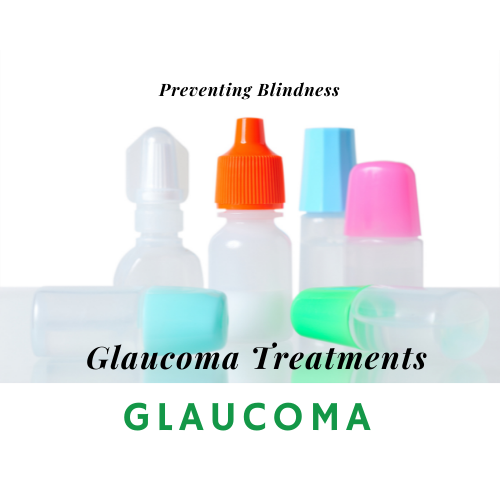How is Glaucoma Treated?


Each January we recognize Glaucoma Awareness Month. Glaucoma is a potentially blinding disease that can affect anyone, but increases in prevalence as we age. Through education we hope to build awareness that blindness from this eye disease can be prevented.
Glaucoma is not one single disease, but a group of eye diseases that cause vision loss because of damage to the optic nerve.
Symptoms usually start slowly and the only way to find out if you have glaucoma is by having a comprehensive dilated eye examination. If any form of glaucoma is left untreated vision loss will occur.
Eye Drops Lower Eye Pressure
Eye drops used to treat and manage glaucoma either decrease eye pressure by decreasing the fluid in the eye or increasing fluid drainage from the eye. Some eye drops do both.
It is important to follow your doctor’s instructions for using eye drops. Some helpful tips on using glaucoma eye drops from the Glaucoma Research Foundation are:
- Be sure your doctor knows about any other drugs you may be taking (including over-the-counter items like vitamins, aspirin, and herbal supplements) and about any allergies you may have.
- Wash your hands before putting in your eye drops.
- Be careful not to let the tip of the dropper touch any part of your eye.
- Make sure the dropper stays clean.
- If you are putting in more than one drop or more than one type of eye drop, wait five minutes before putting the next drop in. This will keep the first drop from being washed out by the second before it has had time to work.
- Store eye drops and all medicines out of the reach of children.
Glaucoma Laser Eye Surgery
If eye drop medications are not lowering eye pressure enough or are causing significant side effects, then a surgery called “Selective Laser Trabeculoplasty” (SLT) may be used. This surgery has been in use for more than 25 years.
Laser energy is applied to the drainage tissue in the eye and this starts a chemical and biological change in the tissue that results in better drainage of fluid out of the eye. This chemical/biological change will take from 1-3 months before results appear.
Some post-operative inflammation is common but is generally mild and is treated with eye drops or an oral non-steroidal anti-inflammatory drug. The effects last from 1 to 5 years and in some cases longer. Repeat laser treatments can be performed.
This laser surgery is FDA approved and is covered by Medicare and medical insurance.
Incisional Surgery
When eye drops or laser surgery does not lower eye pressure adequately, a surgery that creates a tiny drainage hole in the sclera (white part of the eye) is used. The new drainage hole allows fluid to flow out of the eye and helps lower eye pressure and prevent or reduce damage to the optic nerve.
Sometimes, the surgically-created drainage hole begins to close, and the pressure rises again. This is because the body tries to heal wounds and injuries. To prevent this closure, anti-wound healing drugs such as mitomycin-C, help slow down the healing of the opening. If needed, glaucoma filtering surgery can be done a number of times in the same eye.
Mitomycin-C works by interfering with the development of the genetic material in a cell, the DNA. This stops it from dividing into 2 new cells and stops its growth.
Medicare and Insurance Coverage
Medicare covers glaucoma medications and treatments, including eye drops, laser therapies, and eye surgeries. For most glaucoma procedures, Medicare Part B pays for 80 percent of the costs after you’ve met your deductible. Most major health insurance also cover glaucoma treatments and surgeries.
If you would like to make an appointment, call us 609.877.2800 or EMail us.
Gregory Scimeca, M.D.
Ophthalmologist and Medical Director
The Eye Professionals
Our Locations
